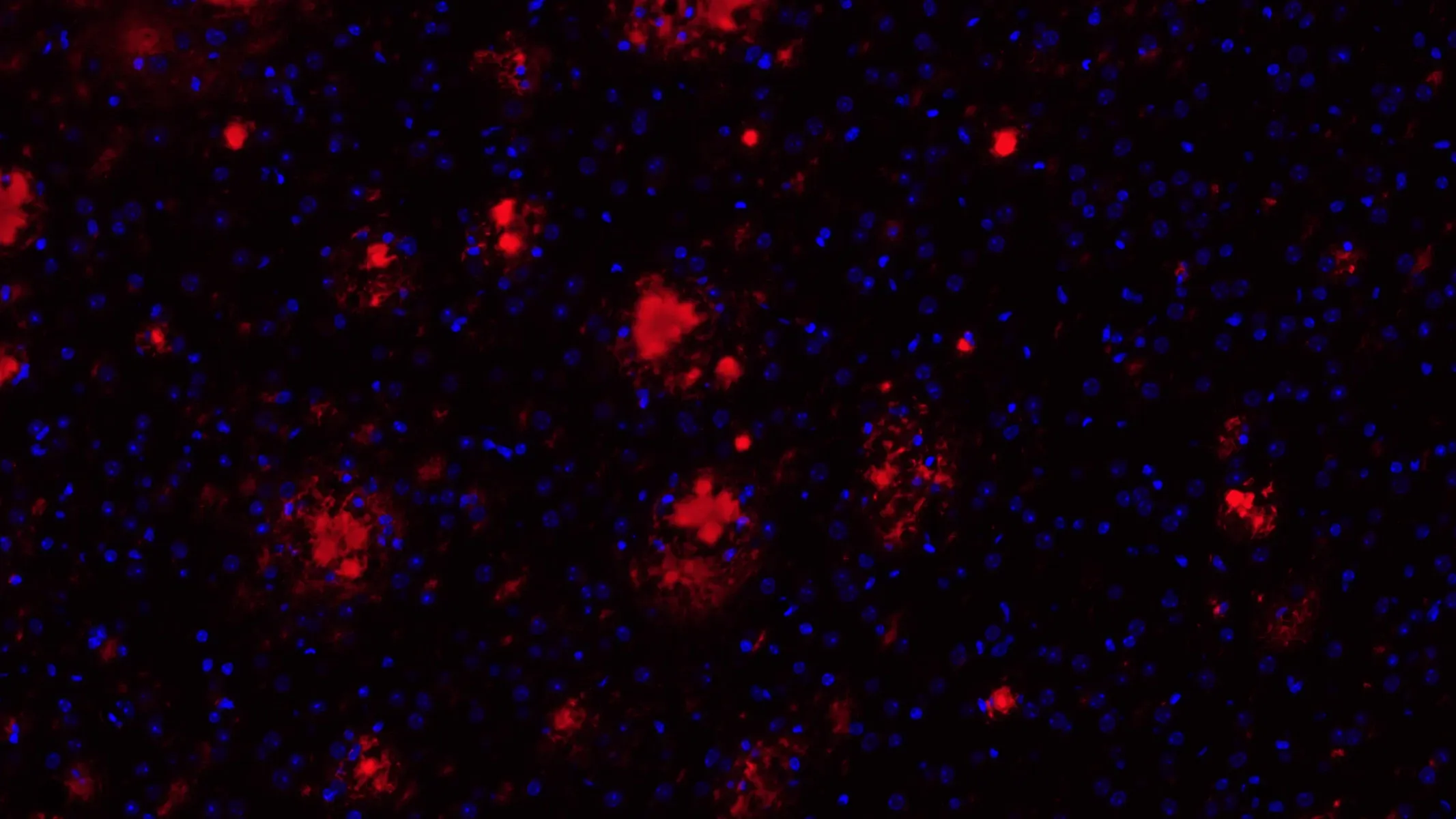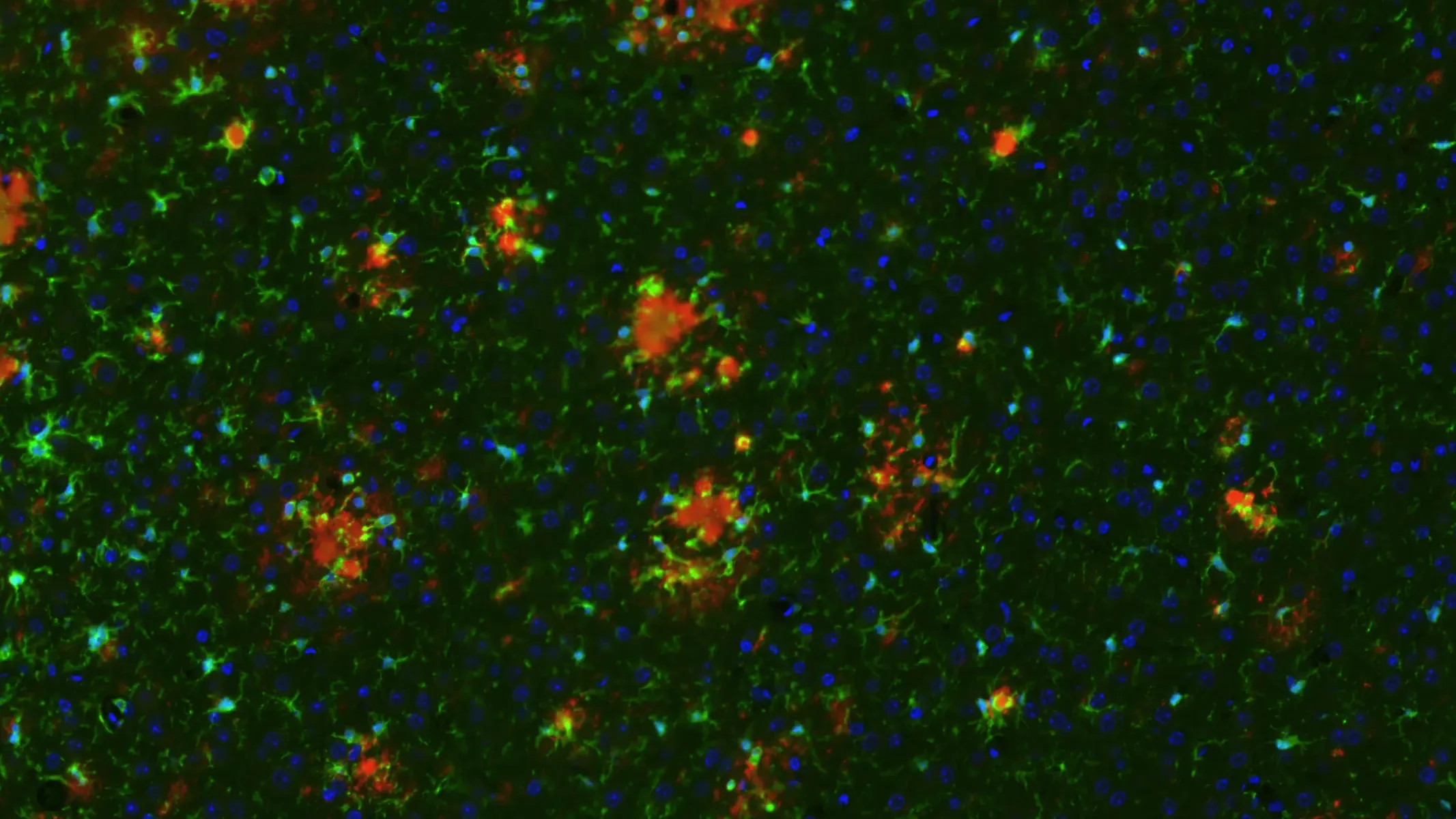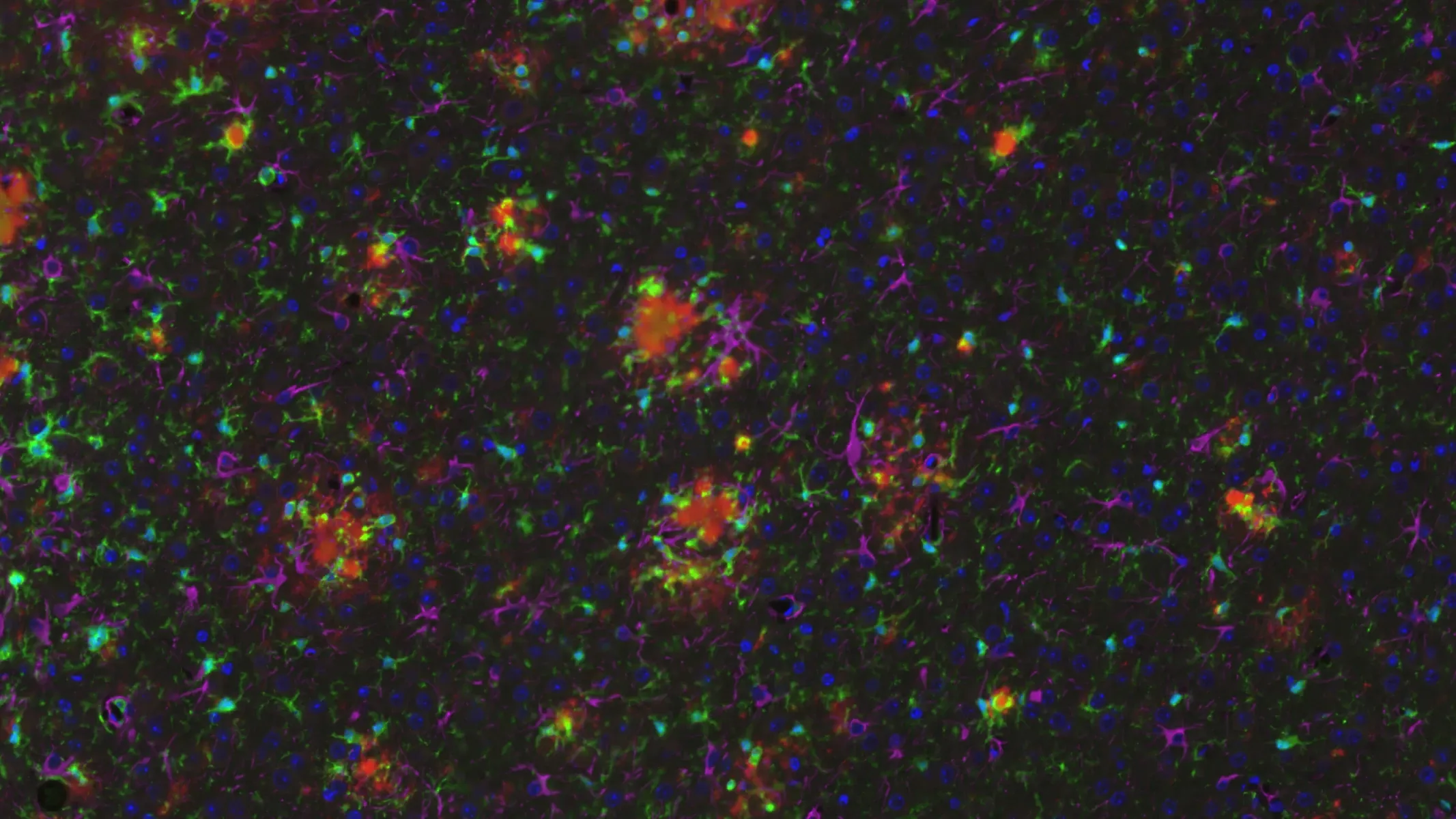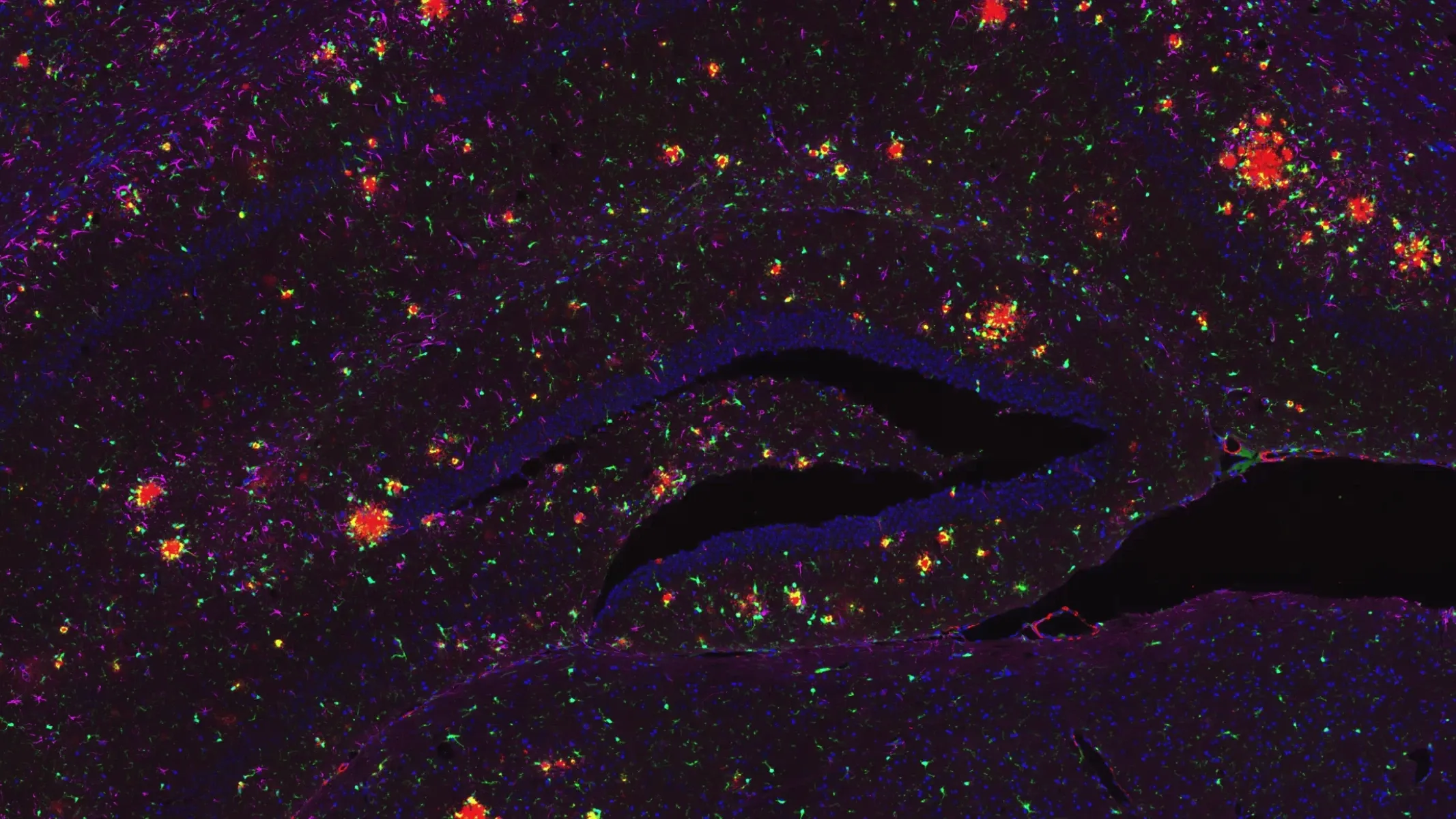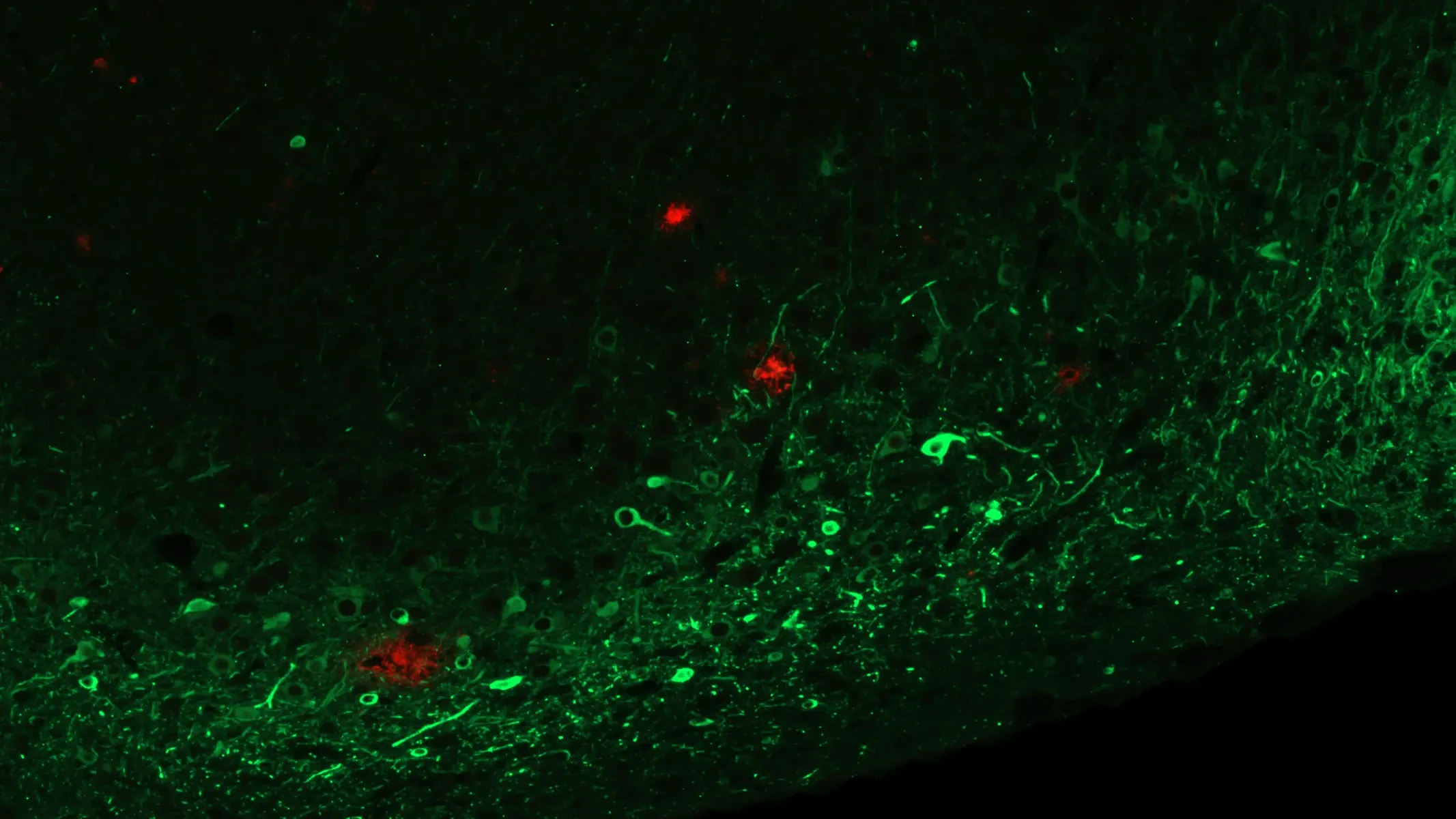淀粉样β与tau蛋白共病理小鼠模型(APP/PS1/hTau) 概述
对于该阿尔茨海默病模型,我们 对双转基因APP/PS1小鼠的多个脑区进行多次双侧立体定向注射,表达 过量AAV-hTau(野生型2N4R人tau)的腺相关病毒(AAV) 。
该小鼠模型再現了人类阿尔茨海默病的多项关键特征,包括:
- β-淀粉样斑块
- 细胞体和神经突中磷酸化tau蛋白的聚集
- 活化的微胶质细胞
- 反应性星形胶质细胞
- 睡眠障碍
- 区域性脑萎缩(体积和皮层厚度)通过活体MRI扫描测量
淀粉样蛋白 -β与tau蛋白共病理小鼠模型(APP/PS1/hTau)的建立
该模型建立的一般流程图如下:
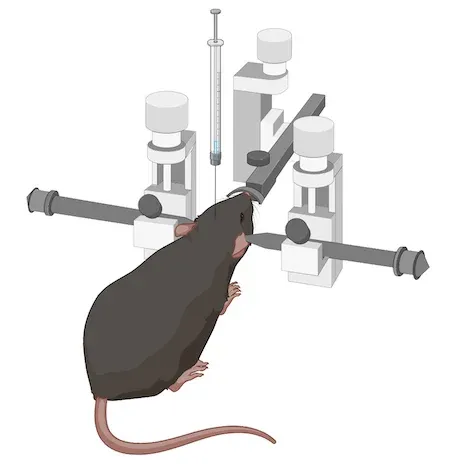
对于该特定模型,我们通常使用约6个月大的APP/PS1小鼠(尽管也可使用更年轻或更年老的小鼠)。随后,我们通过立体定向注射将AAV载体注入多个与疾病相关的脑区。我们采用配备自动微注射器的数字立体定向设备,以确保高精度与高准确性。
研究的体内阶段 通常持续4-12周。在体内的读出指标,如MRI脑萎缩,最早可在4周时显示显著效果。因此,读出指标的生成可在相对较短的时间内完成,尤其与传统阿尔茨海默病及tau病变的tau转基因模型相比。
模型特征分析
下方的互动演示文稿使您能够探索我们对淀粉样β蛋白(β-淀粉样蛋白)与人类tau蛋白共病理(APP/PS1/hTau)小鼠模型的特征化研究,包括体内实验数据及高分辨率的多重免疫荧光组织切片图像。
您可通过左侧面板在该“图像故事”中自由浏览。
您可以使用鼠标左键在高分辨率显微镜图像中自由移动。您可以通过 鼠标/触控板(上下滚动)或左上角的“+”和“-”按钮进行缩放 。您可以在右上角的控制面板中 切换(开启/关闭)、更改颜色以及调整通道和分割的图像设置。
建议使用 全屏模式以获得 最佳互动体验。
了解更多关于我们对APP/PS1/hTau模型的特征分析、经过验证的测量方法以及我们的临床前神经科学合同研究组织(CRO)服务。
探索更多关于阿尔茨海默病与tau病变的模型
相关内容
关于阿尔茨海默病与tau病变的最新研究进展,以及在动物模型中评估治疗药物时使用转化生物标志物的最佳实践。
阿尔茨海默病中的星形细胞形态
星形胶质细胞形态学分析概述及其在神经退行性疾病研究和药物研发中的应用。
